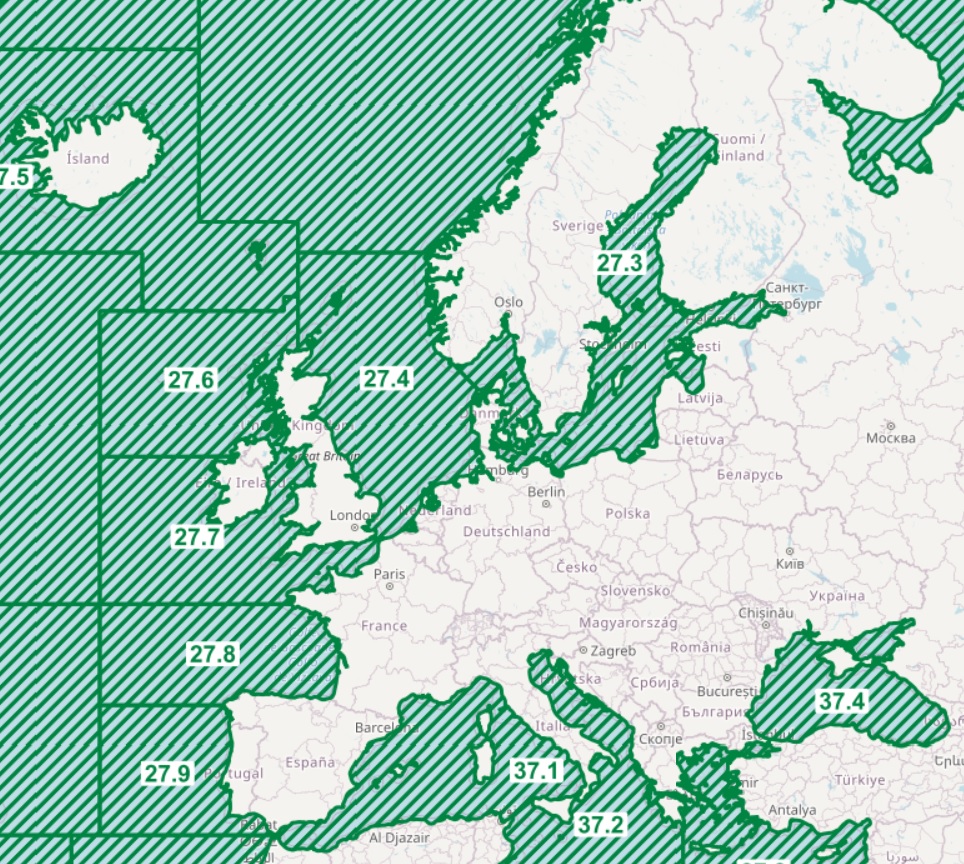EUROSTAT
Type of resources
Available actions
Topics
Keywords
Contact for the resource
Provided by
Years
Formats
Representation types
Scale 1:
-

The dataset on fish catches in the European waters by FAO statistical areas was created in 2015 by Cogea for the European Marine Observation and Data Network (EMODnet). It is the result of the aggregation of EUROSTAT's fish catches datasets fish_ca_atl 27, fish_ca_atl 34, fish_ca_atl 37, fish_ca_atl271, fish_ca_atl272, fish_ca_atl34_h and fish_ca_atl37_h. It is available for viewing and download on EMODnet web portal (Human Activities, https://emodnet.ec.europa.eu/en/human-activities). EUROSTAT data have been related to FAO's georeferenced fishing areas (polygons) for statisticl purposes (FAO, 2020. FAO Statistical Areas for Fishery Purposes. In: FAO Fisheries and Aquaculture Department). Tonnes live weight is provided for each fish species caught (3-alpha code and english or scientific name if the english one is not available), by EUMOFA's larger aggregations such as EUMOFA's Commodity Groups and Main Commercial Species (see 'Species_Eumofa_ASFIS_2023' table), by year of reference and country (code and name). The dataset is updated yearly and it covers a time series from 1950 to 2021, where available. Compared with the previous version this new one's schema have been updated.
-

The dataset on maritime transport of goods, passengers and vessels in the European main ports was created in 2014 by Eurofish and Cogea for the European Marine Observation and Data Network (EMODnet). It is available for viewing and download on EMODnet web portal (Human Activities, https://emodnet.ec.europa.eu/en/human-activities). The dataset is the result of the harmonization and aggregation on annual basis of the quarterly Eurostat Maritime transport data, provided by port in the EU Member States, Montenegro, Norway, Turkey and the UK. Eurostat data have been related to the 'Ports 2013' EUROSTAT GISCO's points georeferenced dataset, when available, or to the ports locations coming from other sources, such as UN/LOCODE, Lloyd’s List, Marine Traffic, VESSEL TRACKER and ports' authorities. Goods traffic data are reported in thousands of tonnes by year, type of cargo and direction. Passengers traffic data are reported in thousands passengers (excluding cruise passengers) by direction and traffic type. Vessels traffic data are reported in unit and gross tonnage (thousands) of vessels by vessel size class and vessel type. Where available, the latest update includes data from the 1997 up to the 2024.
 EMODnet Product Catalogue
EMODnet Product Catalogue